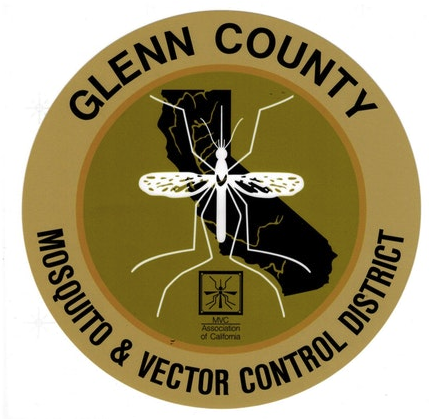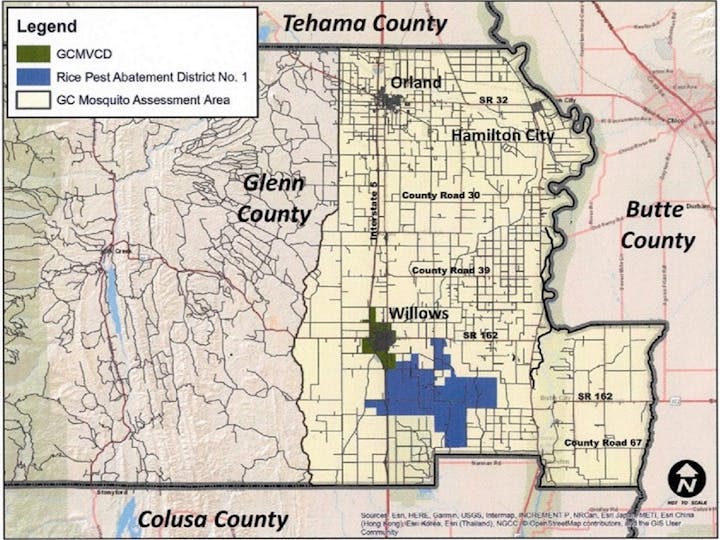About The District

The Glenn County Mosquito and Vector Control District (GCMVCD) was formed in 1962 and began operating in 1963. The District Covers 5 square miles that includes the City limits of Willows, North East Willows, and the unincorporated area North of Willows.
In 1999 the United States detected its first cases of West Nile Virus in New York. It quickly spread west across the United States reaching Glenn County in 2004. The Glenn County Board of Supervisors saw the need for mosquito control in Glenn County so they contracted with the GCMVCD to provide limited mosquito control services to all of Glenn County until State Grant Emergency Funds became available to help fight West Nile Virus. County Wide mosquito control services continued operating on State Emergency funds until all State Emergency funds had been exhausted. The Glenn County Health and Human Services saw the need to continue mosquito control services to all residents of Glenn County and continued to fund limited mosquito control services from 2005-2006. During that time the Glenn County Health and Human Services decided to investigate the possibility of establishing a local funding source focused on mosquito and disease control services. In 2007 the Glenn County Board of Supervisors directed the initiation of proceedings for a proposed special assessment for mosquito and disease services and in 2007 the Valley-Wide Mosquito Abatement District was formed. The Valley-Wide Mosquito Abatement District continues to contract with the GCMVCD to provide mosquito control services.
The Valley-Wide Mosquito Abatement District roughly covers 420 square miles (basically the valley floor of Glenn County). It excludes the already existing Glenn County Mosquito and Vector Control District, the Rice Pest Abatement District #1, Hamilton City Community Service District (currently served by the Butte County MVCD) and the unincorporated part of Glenn County to the west of the Tehama Colusa Canal and everything west of County Road D were the Tehama Colusa Canal crosses.


